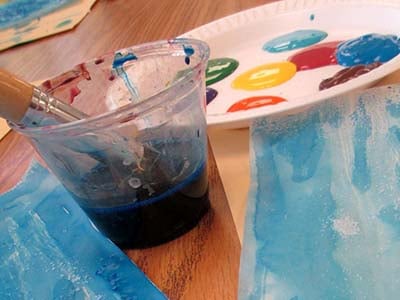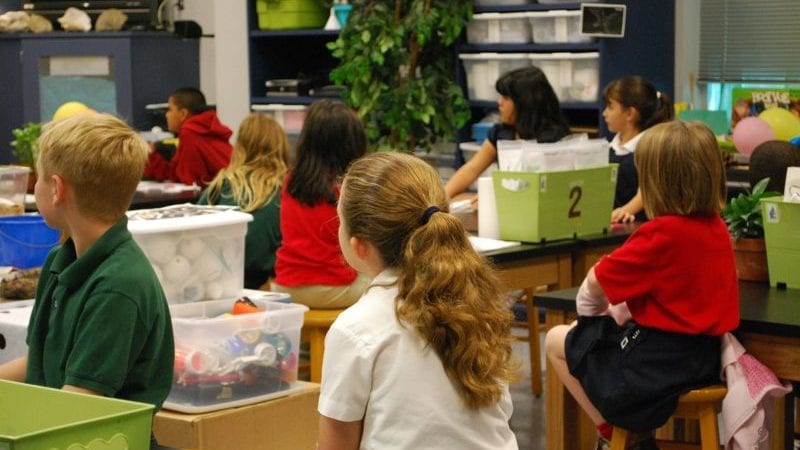How To Integrate Art Into Science
- Integrating visual art and science is a way to meet the needs of all students. Although many of these lessons are designed for eighth graders, the basic approach of using art-based activities to help students understand scientific theories can be applied to K-5 classes.
- Integrating science and language arts. Coupling inquiry-based science lessons and language arts instruction allows educators to prepare students for the critical reading and open response portions of standardized tests without neglecting science education. And here’s the good news: It’s much easier than you might think.

“If you pick a subject area like science, social studies, math or literacy and you integrate it with an art form, what you do is connect the two and find ways to really integrate the two so they lean on each other,” said Judy Klima, an integrated arts coach at IAA.
It’s easy to feel as if there aren’t enough hours in the school day to properly address all the curriculum and instructional expectations that we must teach our students. The challenging part is addressing curriculum expectations in a meaningful way where students are engaged and motivated throughout the lesson.
One of the most powerful strategies that we have ever learned as teachers is taking a cross-curricular approach in planning lessons and units for the school year, as we are able to incorporate curriculum expectations from various subject areas to create an engaging activity. By developing cross-curricular activities that are both fun and motivating, teachers can easily integrate science into different subject areas—it only requires a bit of planning and creativity!
We all know that science and math are easy to teach together, but did you know that science can be creatively woven into other subject areas? Science can be integrated into English language arts, the arts, health and physical education, and social studies to create engaging lessons and activities that your students will just love! Here are some easy ways to integrate science across the curriculum.
Science with English / Language Arts
Science can be integrated into English language arts in order to touch upon curriculum expectations for reading, writing, oral communication, and media literacy.
Science Poems
Teachers can begin by sharing science poems with their students. There are so many excellent resources available. Some great examples are:
- The Science Verse by Jon Scieszka and Lane Smith (2004)
- The Blood-Hungry Spleen and Other Poems About Our Parts by Allan Wolf (2003), or
- The Seasons edited by John N. Serio.
Your students can then have their own Poet’s Corner by writing various poems (e.g. haiku, tanka, free verse, sonnet, acrostic) to reflect science concepts and then sharing them with the class!
Science Video Writing Activities
An excellent short movie to share with your class is The Story of Bottled Water. This lesson is a great way to incorporate media literacy into your science lessons (and vice versa!) and promote a healthy discussion with your students regarding the environmental implications of their daily actions.
Organizing Science Info
Give your students a particular topic and have them use Venn Diagrams, T-Charts, or other graphic organizers to compare and contrast the main ideas. This activity can then be extended if students prepare a written response, deliver a speech, or participate in a classroom debate.
In the past, our students have taken part in a classroom debate where they act as characters determining whether a deposit should be mined in a fictional town. It is lots of fun, and students really take their roles seriously!
Science & the Arts
By incorporating science and the arts together, students will be immersed in activities that allow them to experience and then express the natural world around them.
Teach the Elements with Mixed Media

Try to provide students with media related to the science unit they are studying. For example, students learning about the water cycle can:
How To Integrate Art Into Science Projects
- Produce water color paintings
- Use clay to discuss the earth’s crust and the effect temperature and pressure have on materials
- Sit outside and use oil pastels to depict the changes in the fall foliage
Upcycle Art Projects
Have students bring in a variety of items from home that would have either been recycled or tossed in the trash and use these items in their artwork. Students can upcycle these items into interesting works of art. Examples include:
- Painting jars
- Using scraps of fabric to make braided bracelets
- Creating interesting 3-D/mixed media paintings.
The possibilities are endless and students will be able to express their creativity while learning about recycling, reusing, upcycling, and sustainability.
Demonstrate Science Concepts through Movement
Have students get up and out of their seats to move around! Not only will students be incorporating science concepts throughout their drama activities, but being able to get up to stretch and move around will also help students release a bit of energy and help them refocus on the task at hand.
Students can act out changes of state by starting off as a frozen piece of ice, melting into a pool of water, and then evaporating into vapor. The same concept can be used to learn about the water cycle, particles, and the four layers of the Earth.
Science, Health and Physical Education
Students can take part in fun and lively physical education lessons that incorporate science concepts in a unique way.
Biology and Nature Walks
When learning about habitats, environmental awareness, ecosystems, or the diversity of life, have students go out on a hike in your area or to a nearby conservation area. Be on the lookout for various environmental programs offered by your state that would provide students with a science lesson while participating in physical activities; for example, students can plant trees, visit local parks to remove litter, or measure and inventory trees.
Physical Education Physics

What better way to learn about physics than to get students physically moving? In this invigorating activity, students can measure the amount of time it takes them to walk, jog, or sprint a particular distance and then calculate their speed and average speed. Students can alter the variables to determine what affects the speed of their performance.

How To Integrate By Parts
Science Fitness Circuits
Set up various cardio, strength training, and stretching circuits during your P.E. classes where students learn about the human body while visiting each station. During the fitness circuit, students could learn about the aorta while doing jumping jacks, triceps while completing push-ups, and Achilles tendons as they perform front leg raises.
Teaching Science with Social Studies

History and science fit together seamlessly. Scientific innovation has been a driving force in societal change. To put it in perspective for students, have them consider what life would be like without the internet, phones, or electricity. What it would be like to look up at the stars and not know what they are?
How To Integrate Art Into Science Project
If you’re teaching a historical time period, you can focus on scientific discoveries and technological advances during that time. Have students create a presentation that highlights one or more scientific innovations and how they affected society (both then and now).
Creating Activities Across All Subjects
The last cross-curricular suggestion can actually incorporate several subjects into one engaging lesson where students work together to develop commercials or public service announcements.
This fun and motivating activity will allow teachers to cover expectations in reading, writing, oral communication, the arts (both visual arts and drama), media literacy, science, and, depending on the topic, even health and physical education.
Pollution PSAs
For example, students can create a public service announcement in small groups on the topic of pollution. As a cross-curricular activity, students would be gathering information, writing a script, acting out their roles, designing props and backgrounds, understanding the role of media, and delivering a powerful science and health message. Students can then present their public service announcements to other classes within the school to spread their message.
